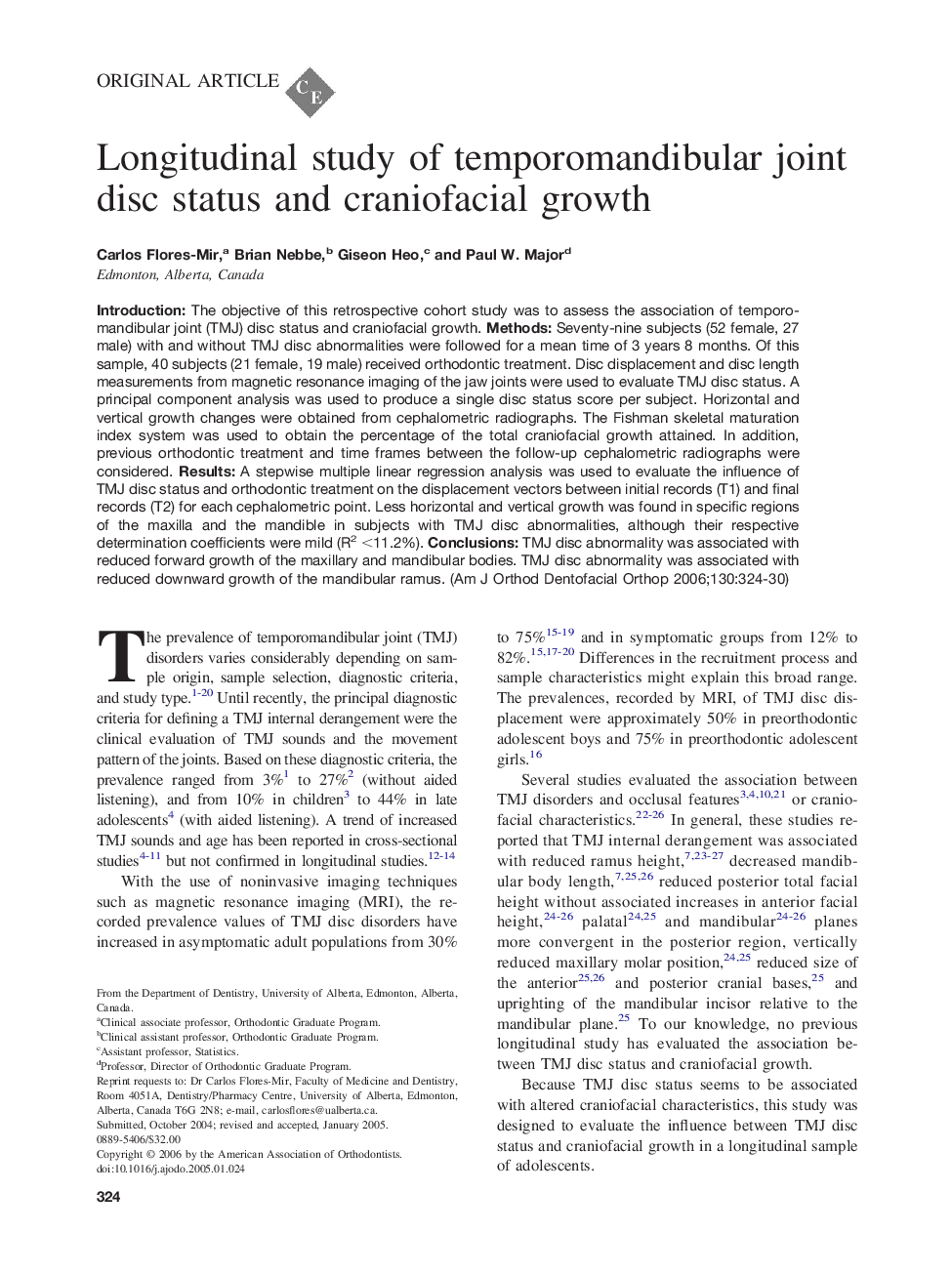| Article ID | Journal | Published Year | Pages | File Type |
|---|---|---|---|---|
| 3119508 | American Journal of Orthodontics and Dentofacial Orthopedics | 2006 | 7 Pages |
Introduction: The objective of this retrospective cohort study was to assess the association of temporomandibular joint (TMJ) disc status and craniofacial growth. Methods: Seventy-nine subjects (52 female, 27 male) with and without TMJ disc abnormalities were followed for a mean time of 3 years 8 months. Of this sample, 40 subjects (21 female, 19 male) received orthodontic treatment. Disc displacement and disc length measurements from magnetic resonance imaging of the jaw joints were used to evaluate TMJ disc status. A principal component analysis was used to produce a single disc status score per subject. Horizontal and vertical growth changes were obtained from cephalometric radiographs. The Fishman skeletal maturation index system was used to obtain the percentage of the total craniofacial growth attained. In addition, previous orthodontic treatment and time frames between the follow-up cephalometric radiographs were considered. Results: A stepwise multiple linear regression analysis was used to evaluate the influence of TMJ disc status and orthodontic treatment on the displacement vectors between initial records (T1) and final records (T2) for each cephalometric point. Less horizontal and vertical growth was found in specific regions of the maxilla and the mandible in subjects with TMJ disc abnormalities, although their respective determination coefficients were mild (R2 <11.2%). Conclusions: TMJ disc abnormality was associated with reduced forward growth of the maxillary and mandibular bodies. TMJ disc abnormality was associated with reduced downward growth of the mandibular ramus.
